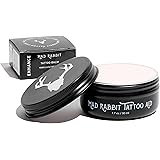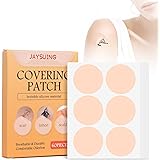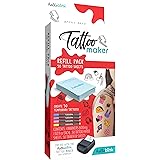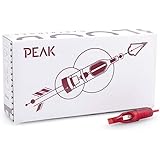A growing trend suggests that over 60% of adults globally seek creative outlets for stress relief. This pursuit often leads to engaging hobbies like the mesmerizing artistry showcased in the video above. Here, subscribers’ names are being beautifully brought to life. Such displays perfectly illustrate the calming nature of calligraphy and hand lettering. These artistic skills are increasingly being explored by many. They offer a unique blend of focus and creative expression.
The intricate dance of pen on paper can be truly captivating. It is more than just writing words. It is about crafting visual art from simple letters. This process is deeply satisfying to watch. It is also incredibly rewarding to practice personally. The video provides a glimpse into this enjoyable world. It highlights the personalized touch that lettering can add to names. Furthermore, it invites viewers to delve deeper into learning these beautiful crafts. Resources, including freebies and workbooks, are often provided for those interested.
Exploring the Art of Calligraphy and Hand Lettering
Often, the terms calligraphy and hand lettering are used interchangeably. However, distinct differences exist between them. Calligraphy is traditionally understood as the art of beautiful writing. It involves specific tools and techniques. Letters are formed with precise strokes. Consistency and classical forms are usually emphasized. Historically, it was a vital method of communication. Today, it remains a cherished art form. Many styles and scripts are available to be learned.
Conversely, hand lettering is drawing letters. This means each letter is often considered a small illustration. More creative freedom is generally afforded here. Artists can experiment with various styles. Unique designs and custom layouts are often created. A personalized aesthetic is commonly sought. It might be less rigid than traditional calligraphy. However, it still requires skill and practice. Both forms offer immense creative satisfaction. They allow for wonderful artistic expression.
Why is Learning Hand Lettering So Popular?
The popularity of hand lettering continues to grow. Several compelling reasons contribute to this trend. Firstly, it offers a mindful escape. The focused nature of the craft can quiet the mind. It helps to reduce daily stress. Many find a sense of peace in the repetitive motions. This makes it an excellent form of relaxation. It is almost like meditation in motion.
Secondly, personal expression is greatly enhanced. Each letter can be imbued with personality. Messages become more impactful and beautiful. Cards, gifts, and personal notes are often elevated. They gain a unique, handcrafted charm. This skill allows for truly one-of-a-kind creations. It connects people in a very special way. The effort involved is always appreciated.
Finally, it is a highly accessible hobby. Basic tools are relatively inexpensive. A simple pen and paper can start your journey. Many free resources are available online. Tutorials, guides, and workbooks offer valuable assistance. The learning curve can be gradual. Progress is often seen quite quickly. This encourages continued practice and enjoyment.
Getting Started with Your Calligraphy Journey
Embarking on a calligraphy journey is an exciting prospect. However, starting might seem daunting. The correct approach can make all the difference. Simple steps are usually recommended for beginners. These steps build a strong foundation. Patience is widely considered key.
Essential Tools for Beginners
The right materials are helpful for success. You do not need expensive equipment. A few basic items are sufficient. These enable immediate practice. Initial investment can be kept low.
- Pens: Brush pens are excellent for beginners. They offer flexibility in line width. Different pressure creates thick and thin strokes. Felt-tip pens also work well. Traditional dip pens are another option, though they can be more challenging initially.
- Paper: Smooth paper is advised. This prevents ink feathering. It also protects pen tips. Dot grid paper can be very useful. It aids in maintaining consistent sizing.
- Ink: Non-bleeding ink is preferred. Many brush pens come pre-filled. Bottled ink is used with dip pens. Experimentation with colors is encouraged later.
- Workbooks: Practice sheets are invaluable. They guide basic strokes. Letterform construction is often demonstrated. Many free resources are available online.
It is important to remember that tools are merely instruments. The skill comes from consistent practice. High-end equipment is not required for learning. Focus should be placed on technique.
Developing Your Lettering Skills Through Practice
Practice is truly foundational for calligraphy. Consistent effort builds muscle memory. This allows for smoother, more confident strokes. Daily sessions, even short ones, are beneficial. Establishing a routine is greatly encouraged.
- Basic Strokes: All letters are formed from basic strokes. Mastering these is crucial. Upstrokes are usually light. Downstrokes are often heavy. This contrast creates beautiful letterforms.
- Letterform Drills: Repetitive practice of individual letters helps. Focus on consistency in height and spacing. Pay attention to ascenders and descenders.
- Word and Phrase Practice: Combine letters into words. This integrates spacing and flow. Short phrases offer a greater challenge. They build confidence in composition.
- Patience and Persistence: Frustration can sometimes arise. However, improvement is guaranteed with time. Mistakes are valuable learning opportunities. The journey itself is often more important.
Many resources, like those mentioned in the video’s bio, can guide this practice. Freebies and workbooks provide structured learning. They offer clear pathways for skill development. Regular engagement with these materials is highly recommended. This helps to reinforce learned techniques.
The Therapeutic Benefits of Creative Expression
Beyond its aesthetic appeal, calligraphy provides significant therapeutic benefits. The act of creating is inherently calming. It fosters a state of flow. Worries often recede during creative endeavors. This provides much-needed mental respite.
Firstly, mindfulness is greatly enhanced. Focus is directed to the present moment. Each stroke demands attention. Distractions are effectively minimized. This fosters a meditative state. It promotes mental clarity and peace.
Secondly, a sense of accomplishment is nurtured. Finishing a piece, however small, is rewarding. This boosts self-esteem. It encourages further creative exploration. The visible progress inspires continued effort.
Moreover, it offers a healthy outlet for emotions. Creative expression can process feelings. It provides a non-verbal communication channel. This can be particularly beneficial. It helps in managing complex emotions. The journey of lettering is truly a holistic experience.
Connecting with the Lettering Community
The world of hand lettering is vibrant. A large, supportive community exists. Sharing work is often encouraged. This allows for feedback and inspiration. Connecting with other artists is very rewarding.
- Online Platforms: Social media is a hub for letterers. Instagram, Pinterest, and YouTube host countless examples. They provide a vast source of inspiration.
- Workshops and Classes: Many artists offer live workshops. These provide direct instruction. They allow for personal interaction.
- Challenges and Prompts: Online lettering challenges are popular. They encourage regular practice. New styles and techniques are often explored.
Engaging with this community enriches the learning process. It provides motivation and encouragement. Ideas are frequently exchanged. It helps artists to develop their unique style in calligraphy. The shared passion for beautiful writing truly connects people.











